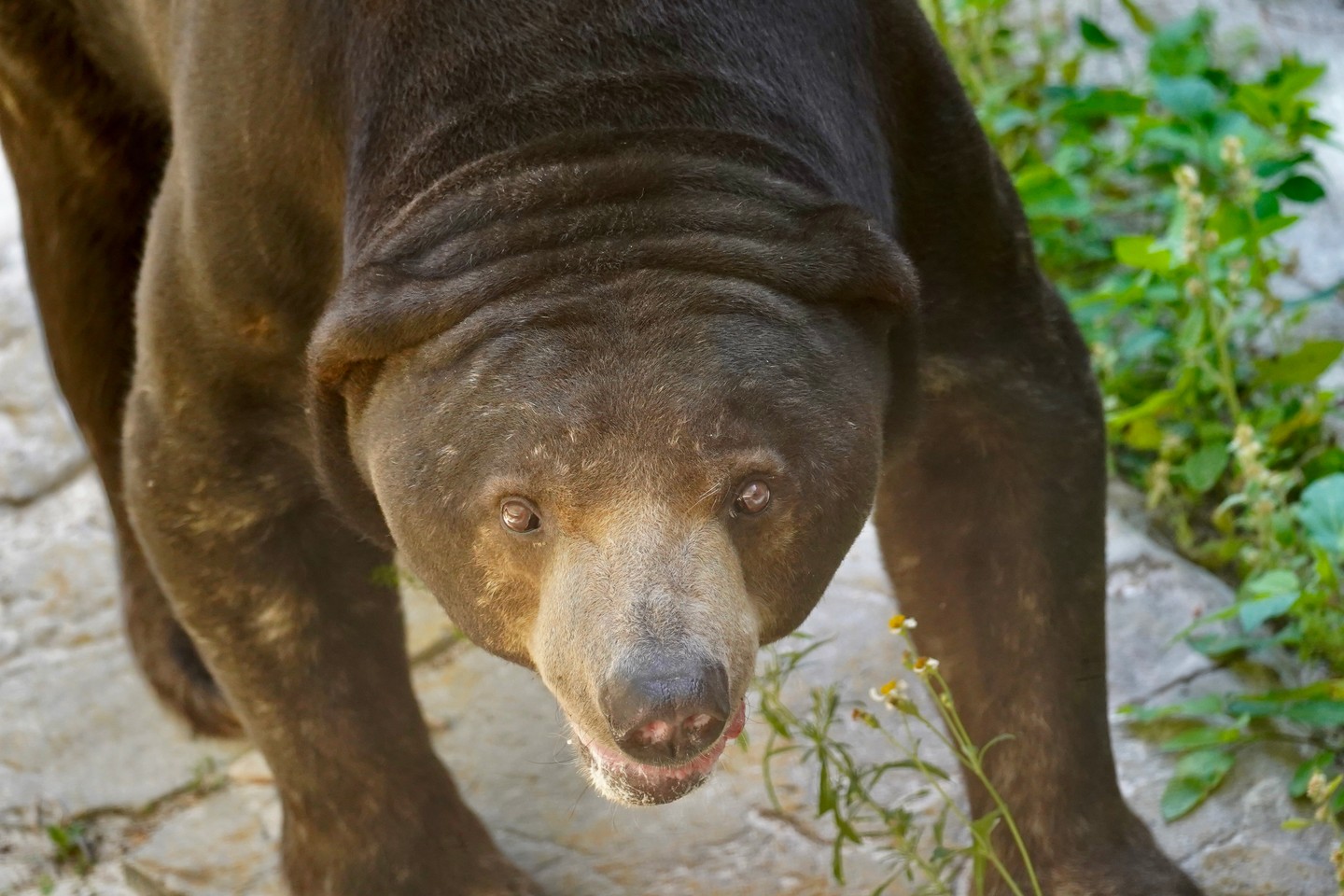- The biology and physical adaptations of Malayan Sun Bears.
- The importance of loose skin and small ear size in bear species.
- Features of the tropical habitat of Malayan Sun Bears.
- Insights into zoo management and wildlife conservation for bears.
- The role of physical adaptations in the survival of Sun Bears.
Malayan Sun Bears, scientifically known as Helarctos malayanus, are a species native to the tropical forests of Southeast Asia. Often referred to as the "honey bear" for their love of honey, they are the smallest of the bear family. Despite their size, their remarkable physical adaptations have made them a subject of intense study and interest. One of the more curious aspects of these bears is their small ears and substantial loose skin, which culminate in the question, "Where are Kacey’s ears in this photo?"
The biology of the Malayan Sun Bear is intriguing in itself. They typically weigh between 60 to 150 pounds, with males being slightly larger than females. Their small stature allows them to navigate the dense forests with relative ease, accessing food resources that larger animals might overlook. The diet of Sun Bears is mainly omnivorous, including fruit, insects, small animals, and of course, honey. Their compact build and long tongues help them extract food from nooks and cavities, while their robust claws allow them to rip open tree trunks and tear apart beehives. The bears’ distinct "U" shaped chest patch, ranging from a creamy white to yellow, is their most identifiable trait, often surrounding a darker coat.
An underappreciated aspect of the Malayan Sun Bear’s survival strategy is its loose skin around the neck. This adaptation is critical for avoiding fatal injuries during confrontations or predation attempts. During a fight, a predator might get a grip on the bear, but the loose skin allows the bear to twist and bite back effectively, minimizing harm to its vital neck area. This loose skin also adds to the mystery of Kacey’s ears being obscured, as these adorable folds often tower over their small ears.
In addition to loose skin, the Sun Bear’s disproportionately small ears help prevent heat loss. The tympanic cavity of their ears is designed to maintain acoustical efficiency while reducing size, making them less susceptible to the wet, humid conditions of their rainforest home. This small ear size is particularly crucial given the Sun Bear’s habitat. The dense undergrowth and continuous rainfall create a cacophony of natural sounds, and retaining heat is vital for energy conservation. If the ears were larger, it would increase surface area and consequently, heat loss—a disadvantageous trait in their environment. For Kacey, this combination of anatomical features not only hides his ears but also ensures survival in a challenging habitat.
Sun Bears inhabit tropical regions, where the climate is characterized by high humidity and abundant rainfall. These forests are a trunk to tree canopy complex ecosystems, providing a plethora of food resources. The tall trees also offer Sun Bears vertical escape routes, assisting them in evading predators. These regions, however, face threats from deforestation and habitat destruction due to agricultural expansion and timber extraction, significantly impacting the Sun Bear populations. Understanding this habitat’s demands on wildlife helps us advocate effectively for conservation measures that can mitigate these effects.
Wildlife conservation and zoo management play pivotal roles in ensuring the survival of the Sun Bear. Protecting these bears includes habitat preservation, educating the public, and enforcing anti-poaching laws. Zoos work as critical partners by participating in breeding programs and creating enriched environments that mimic the bear’s natural habitat. Providing climbing structures and mental stimulation aids in maintaining their quality of life in captivity. Further, zoos engage in research initiatives that deepen our understanding of Sun Bear biology and behavior, contributing significantly to conservation efforts in their native habitats.
Physical adaptations like small ear size and loose skin underscore the evolutionary ingenuity that aids Sun Bears in their struggle for survival. They highlight the necessity of maintaining balance in natural habitats to support these species. For Kacey, these evolutionary features result in a charming appearance that draws public attention and raises awareness about conservation challenges. Bears like Kacey serve as ambassadors in both local and global conservation contexts, helping educate the public about the importance of safeguarding wildlife for future generations.
Encountering Sun Bears, whether in photographs or in conservation sanctuaries, reinforces our responsibility for their continued existence. By appreciating quirks such as the curious question of "Where are Kacey’s ears in this photo?" we can foster deeper engagement with wildlife conservation and the protection of vulnerable species that are an integral part of our world. Understanding and protecting natural wonder is a shared human responsibility, one that benefits the entire ecosystem and strengthens the effort to conserve our planet’s biological diversity.
*****
Source Description
“Where are Kacey’s ears in this photo?” You ask. 👂️
We have the answer (as we *almost* always do)! Malayan Sun Bears have a substantial amount of loose skin around their neck, protecting any vital innards during an altercation with another bear. 👊 Additionally, Sun Bears have small ears to prevent unnecessary heat loss in their tropical, rainy habitats, ⛈️ creating the perfect recipe for Kacey’s rolls to roll over his ears. The cutest coincidence.

